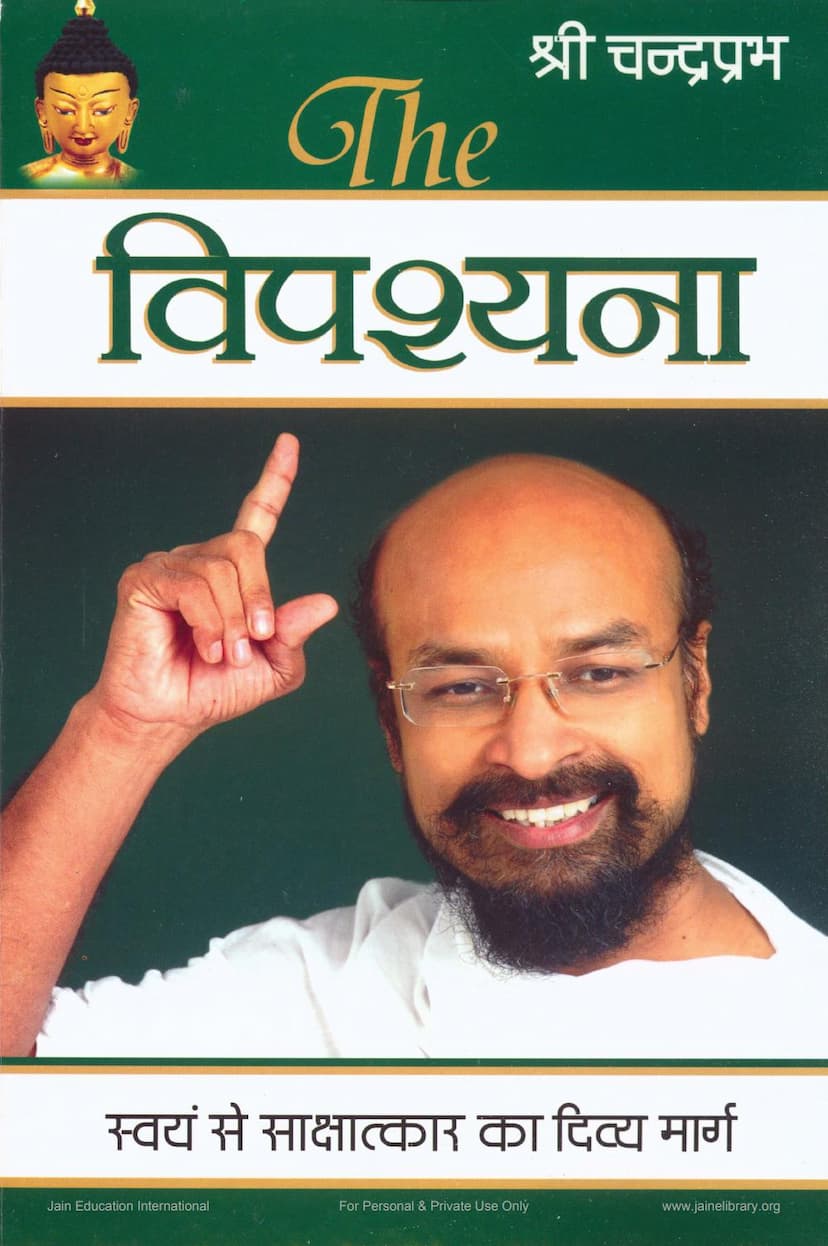Vipashyana
Added to library: September 2, 2025

Summary
This document is a summary of the Jain text "Vipashyana" by Shri Chandraprabhsagar, published by Shri Jityasha Foundation. The book, edited by Lata Bhandari 'Meera', was released in January 2013. It is presented as a "divine path to self-realization."
The introductory section emphasizes Lord Buddha's journey from extreme asceticism to discovering the Middle Path. It highlights that through intense penance, Buddha realized that the true realization of truth was not achieved until he abandoned severe austerities. Upon ceasing the arduous practices, Siddhartha found peace of mind and body, leading to the blossoming of "Buddhahood" within him. The text states that Pujya Shri Chandraprabhji has also experienced this self-realization and shares this joy with seekers. The book compiles spiritual dialogues delivered by Pujya Shri Chandraprabhji during a "Sambodhi-Sadhana-Camp" on the practice of Vipashyana, Lord Buddha's specific meditation technique.
The book is structured with an index covering topics such as:
- Awakening awareness and consciousness towards oneself.
- The necessity of the Five Precepts (Panchsheel).
- Understanding what Vipashyana is.
- The need for consciousness and continuity in Vipashyana.
- Anapan-Yoga as the gateway to Samadhi.
- Practicing Anupashyana while walking and moving.
- How to sever attachments.
- How to escape the cycle of desire (vasana).
- The extraordinary fruits of Vipashyana.
- How to practice Anupashyana of the mind.
- Liberation from internal conflict.
Key themes and teachings elucidated throughout the text include:
- Vipashyana/Anupashyana: This is presented as a supreme meditation technique, a divine path to self-realization. It involves "seeing oneself specially," being aware of one's own nature, and observing the body, breath, and mental states without judgment. The terms Vipashyana (Buddha's term) and Anupashyana (Mahavir's term) are used interchangeably, both signifying a deep and continuous observation of oneself.
- The Middle Path: The book endorses Lord Buddha's Middle Path, advocating for balance in life, avoiding extremes of indulgence and asceticism. This path is described as practical, scientific, and a way of living that brings peace and effortlessness.
- Self-Awareness and Consciousness (Hosh and Bodh): A central theme is the importance of being mindful and aware of one's thoughts, actions, and feelings at all times. This heightened awareness is crucial for spiritual progress.
- Tapasya (Penance/Austerity): The text distinguishes true tapasya not as physical hardship or starvation, but as the discipline and refinement of the mind and senses. It emphasizes transforming one's home into a "tapovan" (place of austerity) through inner discipline.
- The Importance of Shila (Virtues/Precepts): The book underscores the foundational role of ethical conduct, like the Five Precepts (Panchsheel) taught by Buddha and similar principles in Jainism (Vrat) and Yoga (Yama). These ethical guidelines provide a stable ground for deeper spiritual practice and prevent deviation from the path.
- Impermanence and Non-Attachment: Through the concept of Anupashyana, the text highlights the impermanent nature of all phenomena (Anityam), including the body, sensations, and mind. Understanding this leads to non-attachment (Anasakti), which is the key to liberation.
- The Body as a Vehicle: The body is described as a "temple" or a "vessel" for spiritual journey. Vipashyana involves observing the body, its sensations, and its eventual decay without attachment, recognizing the impermanence of the physical form.
- The Mind and its Control: The text addresses the capricious nature of the mind, comparing it to a restless monkey or a dancing flame. It stresses the need to understand and discipline the mind through Anupashyana, rather than suppressing it.
- The Nature of Reality: Vipashyana aims to reveal the direct experience of reality as it is, free from interpretations or impositions. It's about meeting one's own truth and witnessing the arising and passing of phenomena.
- The Role of Practice: Success in Vipashyana is not achieved overnight but through consistent, diligent practice (Apamaad and Lagatar). It requires patience and perseverance.
- Living Dhamma: The book advocates for embodying the teachings of dharma through action and living, not just through discussion or intellectual understanding.
- Inner Transformation: The ultimate goal is to purify the inner being, overcome internal conflicts, and realize the true self, leading to peace, joy, and liberation. The text uses various parables and stories from the lives of Buddha, Mahavir, and other saints to illustrate these points.
In essence, "Vipashyana" by Shri Chandraprabhsagar offers a profound exploration of Vipashyana meditation, guiding seekers towards self-realization through mindful observation, ethical living, and inner discipline, drawing wisdom from both Buddhist and Jain traditions.